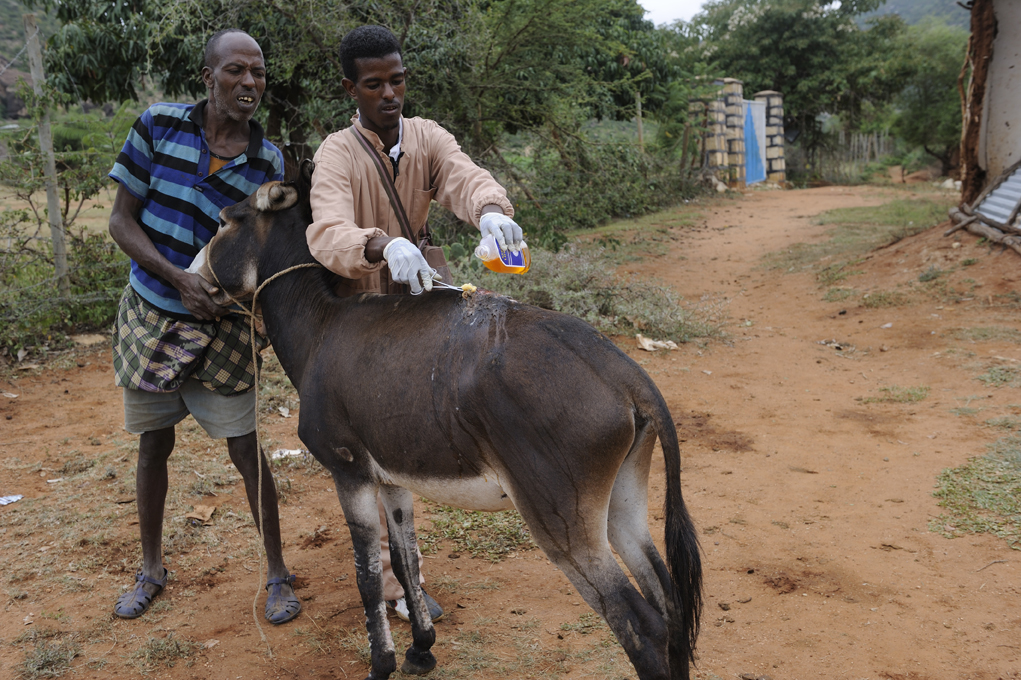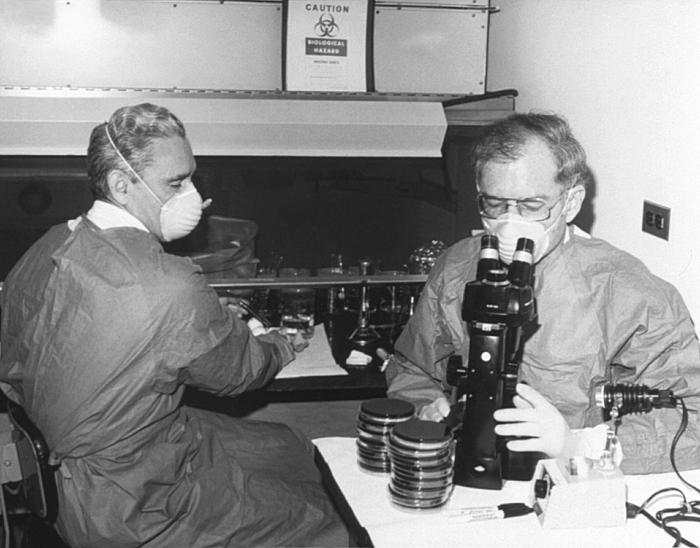|
Theriogenology
Theriogenology is a specialty of veterinary medicine concerned with animal reproduction. This includes the physiology and pathology of male and female reproductive systems of animals and the clinical practice of veterinary obstetrics, gynecology, andrology and assisted reproductive technologies (ART). Theriogenologists are veterinarians with advanced training in animal reproduction like semen analysis, evaluation and processing, breeding soundness, in vitro fertilisation (IVF), embryo transfer and obstetrics. In the United States, all theriogenologists are board-certified by the American College of Theriogenologists. The English word derives from the Greek words for beast (''therio''), creation (''gen''), and study (''logos''). See also * Artificial insemination#Other animals *Animal sexual behavior Animal sexual behaviour takes many different forms, including within the same species. Common mating or reproductively motivated systems include monogamy, polygyny, polyandry, ... [...More Info...] [...Related Items...] OR: [Wikipedia] [Google] [Baidu] |
Embryo Transfer
Embryo transfer refers to a step in the process of assisted reproduction in which embryos are placed into the uterus of a female with the intent to establish a pregnancy. This technique - which is often used in connection with in vitro fertilization (IVF) - may be used in humans or in other animals, in which situations and goals may vary. Embryo transfer can be done at day two or day three, or later in the blastocyst stage, which was first performed in 1984. Factors that can affect the success of embryo transfer include the endometrial receptivity, embryo quality, and embryo transfer technique. Fresh versus frozen Embryos can be either "fresh" from fertilized egg cells of the same menstrual cycle, or "frozen", that is they have been generated in a preceding cycle and undergone embryo cryopreservation, and are thawed just prior to the transfer, which is then termed "frozen embryo transfer" (FET). The outcome from using cryopreserved embryos has uniformly been positive wit ... [...More Info...] [...Related Items...] OR: [Wikipedia] [Google] [Baidu] |
In Vitro Fertilisation
In vitro fertilisation (IVF) is a process of fertilisation in which an ovum, egg is combined with spermatozoon, sperm in vitro ("in glass"). The process involves monitoring and stimulating the Ovulation cycle, ovulatory process, then removing an ovum or ova (egg or eggs) from the ovary, ovaries and enabling sperm to fertilise them in a culture medium in a laboratory. After a fertilised egg (zygote) undergoes embryo culture for 2–6 days, it is Embryo transfer, transferred by catheter into the uterus, with the intention of establishing a successful pregnancy. IVF is a type of assisted reproductive technology used to treat infertility, enable gestational surrogacy, and, in combination with pre-implantation genetic testing, avoid the transmission of abnormal genetic conditions. When a fertilised egg from egg and sperm donors Implantation (embryology), implants in the uterus of a genetically unrelated surrogate, the resulting child is also genetically unrelated to the surrogate. ... [...More Info...] [...Related Items...] OR: [Wikipedia] [Google] [Baidu] |
Veterinary Obstetrics
Veterinary obstetrics are the obstetrical methods used in veterinary medicine, which are quite different from those of human medicine. Veterinary obstetrics is a branch of veterinary medicine that deals with medical and surgical care together with manipulations of the female animals in breeding, gestation, labor, puerperium (postpartum period), and care of the newborn. Some special cases * Strophosomia See also *Pregnancy (mammals) *Theriogenology Theriogenology is a specialty of veterinary medicine concerned with animal reproduction. This includes the physiology and pathology of male and female reproductive systems of animals and the clinical practice of veterinary obstetrics, gynecology, ... Veterinary procedures {{veterinary-med-stub ... [...More Info...] [...Related Items...] OR: [Wikipedia] [Google] [Baidu] |
Artificial Insemination
Artificial insemination is the deliberate introduction of sperm into a female's cervix or uterine cavity for the purpose of achieving a pregnancy through in vivo fertilization by means other than sexual intercourse. It is a fertility treatment for humans, and is a common practice in animal breeding, including dairy cattle (see frozen bovine semen) and pigs. Artificial insemination may employ assisted reproductive technology, sperm donation and animal husbandry techniques. Artificial insemination techniques available include intracervical insemination (ICI) and intrauterine insemination (IUI). Where gametes from a third party are used, the procedure may be known as 'assisted insemination'. Humans History The first recorded case of artificial insemination was John Hunter in 1790, who helped impregnate a linen draper's wife. The first reported case of artificial insemination by donor occurred in 1884: William H. Pancoast, a professor in Philadelphia, took sperm from hi ... [...More Info...] [...Related Items...] OR: [Wikipedia] [Google] [Baidu] |
Animal Sexual Behavior
Animal sexual behaviour takes many different forms, including within the same species. Common mating or reproductively motivated systems include monogamy, polygyny, polyandry, polygamy and promiscuity. Other sexual behaviour may be reproductively motivated (e.g. sex apparently due to duress or coercion and situational sexual behaviour) or non-reproductively motivated (e.g. homosexual sexual behaviour, bisexual sexual behaviour, cross-species sex, sexual arousal from objects or places, sex with dead animals, etc.). When animal sexual behaviour is reproductively motivated, it is often termed ''mating'' or '' copulation''; for most non-human mammals, mating and copulation occur at oestrus (the most fertile period in the mammalian female's reproductive cycle), which increases the chances of successful impregnation. Some animal sexual behaviour involves competition, sometimes fighting, between multiple males. Females often select males for mating only if they appear stro ... [...More Info...] [...Related Items...] OR: [Wikipedia] [Google] [Baidu] |
Veterinary Medicine
Veterinary medicine is the branch of medicine that deals with the prevention, management, medical diagnosis, diagnosis, and treatment of disease, disorder, and injury in non-human animals. The scope of veterinary medicine is wide, covering all animal species, both List of domesticated animals, domesticated and wildlife, wild, with a wide range of conditions that can affect different species. Veterinary medicine is widely practiced, both with and without professional supervision. Professional care is most often led by a veterinarian, veterinary physician (also known as a veterinarian, veterinary surgeon, or "vet"), but also by paraveterinary workers, such as veterinary nurses, veterinary technicians, and veterinary assistants. This can be augmented by other paraprofessionals with specific specialties, such as animal physiotherapy or dentistry, and species-relevant roles such as farriers. Veterinary science helps human health through the monitoring and control of Zoonosis, zoonoti ... [...More Info...] [...Related Items...] OR: [Wikipedia] [Google] [Baidu] |
Physiology
Physiology (; ) is the science, scientific study of function (biology), functions and mechanism (biology), mechanisms in a life, living system. As a branches of science, subdiscipline of biology, physiology focuses on how organisms, organ systems, individual organ (biology), organs, cell (biology), cells, and biomolecules carry out chemistry, chemical and physics, physical functions in a living system. According to the classes of organisms, the field can be divided into clinical physiology, medical physiology, Zoology#Physiology, animal physiology, plant physiology, cell physiology, and comparative physiology. Central to physiological functioning are biophysics, biophysical and biochemical processes, homeostasis, homeostatic control mechanisms, and cell signaling, communication between cells. ''Physiological state'' is the condition of normal function. In contrast, ''pathology, pathological state'' refers to abnormality (behavior), abnormal conditions, including human diseases. ... [...More Info...] [...Related Items...] OR: [Wikipedia] [Google] [Baidu] |
Pathology
Pathology is the study of disease. The word ''pathology'' also refers to the study of disease in general, incorporating a wide range of biology research fields and medical practices. However, when used in the context of modern medical treatment, the term is often used in a narrower fashion to refer to processes and tests that fall within the contemporary medical field of "general pathology", an area that includes a number of distinct but inter-related medical specialties that diagnose disease, mostly through analysis of tissue (biology), tissue and human cell samples. Idiomatically, "a pathology" may also refer to the predicted or actual progression of particular diseases (as in the statement "the many different forms of cancer have diverse pathologies", in which case a more proper choice of word would be "Pathophysiology, pathophysiologies"). The suffix ''pathy'' is sometimes used to indicate a state of disease in cases of both physical ailment (as in cardiomyopathy) and psych ... [...More Info...] [...Related Items...] OR: [Wikipedia] [Google] [Baidu] |
Gynecology
Gynaecology or gynecology (see American and British English spelling differences) is the area of medicine concerned with conditions affecting the Female reproductive system, female reproductive system. It is often paired with the field of obstetrics, which focuses on pregnancy and childbirth, thereby forming the combined area of obstetrics and gynaecology (OB-GYN). Gynaecology encompasses both Primary care, primary and Preventive healthcare, preventative care of issues related to female reproduction and sexual health, such as the uterus, vagina, fallopian tubes, ovaries, and breasts; subspecialties include family planning; minimally invasive surgery; pediatric and adolescent gynecology; and pelvic medicine and reconstructive surgery. While gynaecology has traditionally centered on Cisgender, cisgender women, it increasingly encompasses anyone with female organs, including transgender, intersex, and Non-binary gender, nonbinary individuals; however, many non-cis women face acce ... [...More Info...] [...Related Items...] OR: [Wikipedia] [Google] [Baidu] |
Andrology
Andrology (from , ''anēr'', genitive , ''andros'' 'man' and , ''-logy, -logia'') is a name for the medicine, medical specialty that deals with male health, particularly relating to the problems of the male reproductive system and urology, urological problems that are unique to men. It is the parallel to gynecology, which deals with medical issues which are specific to female health, especially reproductive and urologic health. Process Andrology covers anomalies in the connective tissues pertaining to the genitalia, as well as changes in the volume of cells, such as in genital hypertrophy or macrogenitosomia. From reproductive and urologic viewpoints, male-specific medical and surgery, surgical procedures include vasectomy, vasovasostomy (one of the vasectomy reversal procedures), orchidopexy, circumcision, sperm/semen cryopreservation, surgical sperm retrieval, semen analysis (for fertility or post-vasectomy), sperm preparation for assisted reproductive technology (ART) as wel ... [...More Info...] [...Related Items...] OR: [Wikipedia] [Google] [Baidu] |
Assisted Reproductive Technologies
Assisted reproductive technology (ART) includes medical procedures used primarily to address infertility. This subject involves procedures such as in vitro fertilization (IVF), intracytoplasmic sperm injection (ICSI), and cryopreservation of gametes and embryos, and the use of fertility medication. When used to address infertility, ART may also be referred to as fertility treatment. ART mainly belongs to the field of reproductive endocrinology and infertility. Some forms of ART may be used with regard to fertile couples for genetic purpose (see preimplantation genetic diagnosis). ART may also be used in surrogacy arrangements, although not all surrogacy arrangements involve ART. The existence of sterility will not always require ART to be the first option to consider, as there are occasions when its cause is a mild disorder that can be solved with more conventional treatments or with behaviors based on promoting health and reproductive habits. Procedures General With ART, the ... [...More Info...] [...Related Items...] OR: [Wikipedia] [Google] [Baidu] |
Animal Reproduction
Animals are multicellular, eukaryotic organisms in the Biology, biological Kingdom (biology), kingdom Animalia (). With few exceptions, animals heterotroph, consume organic material, Cellular respiration#Aerobic respiration, breathe oxygen, have myocytes and are motility, able to move, can reproduce sexually, and grow from a hollow sphere of Cell (biology), cells, the blastula, during embryonic development. Animals form a clade, meaning that they arose from a single common ancestor. Over 1.5 million extant taxon, living animal species have been species description, described, of which around 1.05 million are insects, over 85,000 are molluscs, and around 65,000 are vertebrates. It has been estimated there are as many as 7.77 million animal species on Earth. Animal body lengths range from to . They have complex ecologies and biological interaction, interactions with each other and their environments, forming intricate food webs. The scientific study of animals is known as ... [...More Info...] [...Related Items...] OR: [Wikipedia] [Google] [Baidu] |





